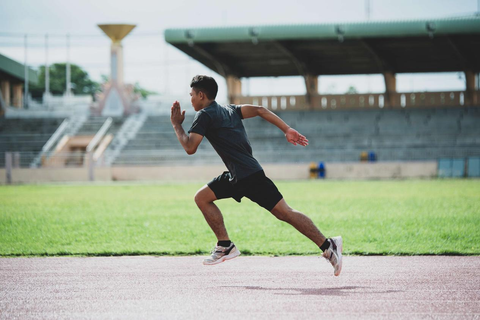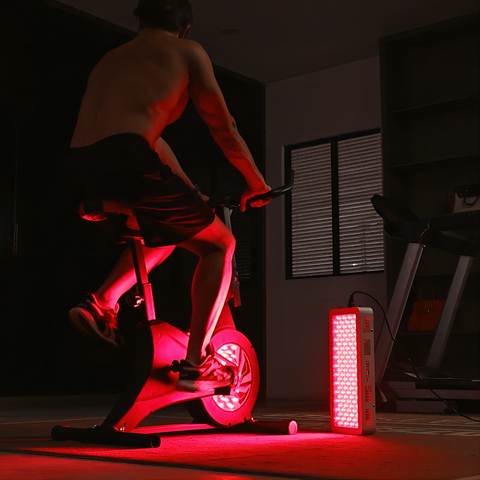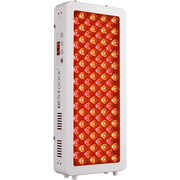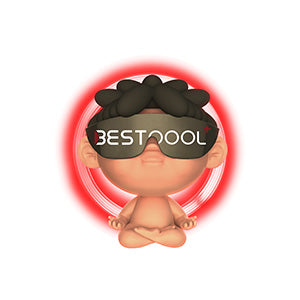Athletes are prone to sports injuries due to high-intensity and high-frequency training. When athletes do strenuous sports and compete, their body strength and coordination are significantly reduced. Sports injuries can cause people to suffer and affect their athletic careers and even their normal lives. Due to sports injuries, athletes can make technical mistakes. It is very important to effectively prevent injuries with innovative scientific rehabilitation methods like red light therapy. After all, injuries can be significant setbacks throughout an athlete's career.

Understanding Red Light Therapy
Red light therapy (RLT) is a form of phototherapy commonly employed in sports rehabilitation and to achieve fitness goals. RLT uses a special filter to obtain concentrated visible light (red) and near-infrared between 660 – 850 nm to irradiate the human body for therapeutic purposes. Red light therapy emerged as a ray of hope in the 21st century as a complementary therapy for wound healing and pain relief. Later, its fame skyrocketed due to its distinct non-invasive treatment properties compared to other phototherapies and traditional methods. RLT is safe, non-invasive, painless, and side-effect-free. It offers a short treatment time and a high cure rate.
Unique Benefits of RLT for Athletes and Fitness Enthusiasts
Since the modulating effect of red light therapy is at the cellular and tissue level, it has a wide range of applications, covering almost all body parts, especially musculoskeletal conditions.
- Injuries Recovery
Overuse of muscles leads to strain and other musculoskeletal problems. Repeating the same movement can cause a muscular strain, regardless of the sport. Red light therapy is popular in sports for its potential to improve athletic performance and faster recovery. When athletes engage in strenuous physical activity, their muscles are subjected to minor and major injuries. Red light therapy helps reduce inflammation by enhancing the flow of blood to the affected area. It ultimately facilitates the delivery of oxygen and nutrients needed for healing and stimulates the production of collagen, which is essential for tissue repair. Several studies have been conducted to determine the efficacy of red light therapy in sports regimes, and they suggest that RLT could potentially improve performance through stretching, nutrition, and resting as a complementary strategy.
- Minimize Injury Risk
Red light therapy has anti-inflammatory properties, and it improves white blood cell production and immunity. Athletes who are prone to exhaustion and have low energy can recover faster from intense workouts using RLT. It also improves bone tissue and prevents injuries by boosting collagen production. It additionally decreases the risk of getting muscular pains and allows athletes to train more effectively.
- Fix Muscular Fatigue
Red light therapy has a unique way of reducing deep pains by boosting endogenous pain-relieving hormones. It enhances circulation and nitric oxide production and is an important molecule for muscle relaxation. NO plays a role in many biological processes within and between cells and helps reduce pain. It ultimately alleviates inflammation and pain in tendons and joints. By reducing muscle pain, athletes can build endurance, train more effectively, and stay healthy physically and mentally.

Traditional Methods of Recovery vs Red Light Therapy
|
Criteria |
Traditional Athletic Care |
RLT |
|
Methods |
Compression therapy, ice baths, drugs |
Deep cellular stimulation by RLT |
|
Effectiveness |
Depending on the method and condition |
Consistently supported by research |
|
Side Effects |
Medicine adverse effects |
Minimal to no reported |
|
Duration Required Per Session |
20-60 minutes |
15-30 minutes |
|
Duration of Effects |
Short-term (Protection lasts for hours) |
Long-term (Cumulative benefits) |
|
Cost Over Time |
subscriptions/memberships |
One-time investment (device) |
|
Convenience |
Appointment-based, location-dependent |
At-home usage of portable devices |
Adding Red Light Therapy to Fitness Routine
Physical therapists, trainers, and athletes recognize the use of red light therapy to improve performance and recovery. Incorporating red light therapy into their training regimen at home or under the guidance of a professional can be a game-changer.
- Warm-up Before Match
Use red light therapy before a workout to warm muscles, increase blood flow, and improve oxygenation. It could be helpful in injury prevention and boosting performance.
- Post-Match Relaxation
After a strenuous game, RLT can help muscles recover by reducing inflammation, relieving soreness, and speeding up healing. Use RLT 15–20 minutes after workout by targeting the areas of your body that need the most attention.
- Injury recovery
If you're recovering from an injury, red light therapy can help speed the healing process by reducing pain and inflammation. Consult a healthcare professional for specific treatment options.
- Consistency is key
It is important to maintain consistency in your treatment. Incorporate it into your daily routine a few times weekly for the best results.
A Manual Guide to Red Light Therapy for Athletes
- Session Length
The frequency and length of red light treatment cycles may vary depending on the severity and type of injury being treated. In general, it is advisable to carry out 15 -30 min sessions several times a week for targeted treatment of several areas.
- Choosing Device
Choosing the right red light therapy device is essential for the best results. Consider factors such as treatment goals, wavelength options, power output, treatment area coverage, user-friendly design, and customization options.
- Personal Safety
Do not exceed therapy frequency and length by more than the recommended time. If any adverse reactions occur, treatment should be immediately discontinued.
Summary
Red light therapy treatment has emerged as a promising and non-invasive alternative to improving athletic abilities. Whether athletes choose an expert session or an at-home red light therapy device, they can take advantage of red light therapy to promote injury recovery, physical health, and endurance.
References
[1] Antonialli, F. C., De Marchi, T., Tomazoni, S. S., Vanin, A. A., dos Santos Grandinetti, V., de Paiva, P. R., Pinto, H. D., Miranda, E. F., de Tarso Camillo de Carvalho, P., & Leal-Junior, E. C. (2014). Phototherapy in skeletal muscle performance and recovery after exercise: effect of combination of super-pulsed laser and light-emitting diodes. Lasers in medical science, 29(6), 1967–1976. https://doi.org/10.1007/s10103-014-1611-7
[2] Fisher, S. R., Rigby, J. H., Mettler, J. A., & McCurdy, K. W(2019). The Effectiveness of Photobiomodulation Therapy Versus Cryotherapy for Skeletal Muscle Recovery;A Critically Appraised Topic. Journal of Sport Rehabilitation, 28(5), 526–531.
https://doi.org/10.1123/jsr.2017-0359
[3] Bjordal, J. M., Lopes-Martins, R. A., Joensen, J., Couppe, C., Ljunggren, A. E., Stergioulas, A., & Johnson, M. I. (2008). A systematic review with procedural assessments and meta-analysis of low-level laser therapy in lateral elbow tendinopathy.BMC musculoskeletal disorders, 9, 75.
https://doi.org/10.1186/1471-2474-9-75
[4] Brosseau, L., Robinson, V., Wells, G., Debie, R., Gam, A., Harman, K., Morin, M., Shea, B., & Tugwell, P. (2005). Low-level laser therapy (Classes I, II and III) for treating rheumatoid arthritis. The Cochrane database of systematic reviews, 2005(4), CD002049.
https://doi.org/10.1002/14651858.CD002049.pub2
[5] Lam, C., & Chung, M. H(2021). Dose-response effects of light therapy on sleepiness and circadian phase shift in shift workers: a meta-analysis and moderator analysis. Sci reports, 11(1), 11976.
https://doi.org/10.1038/s41598-021-89321-1














 Small
Small

 Moderate
Moderate

 Moderate
Moderate

 Moderate
Moderate

 Full
Full



